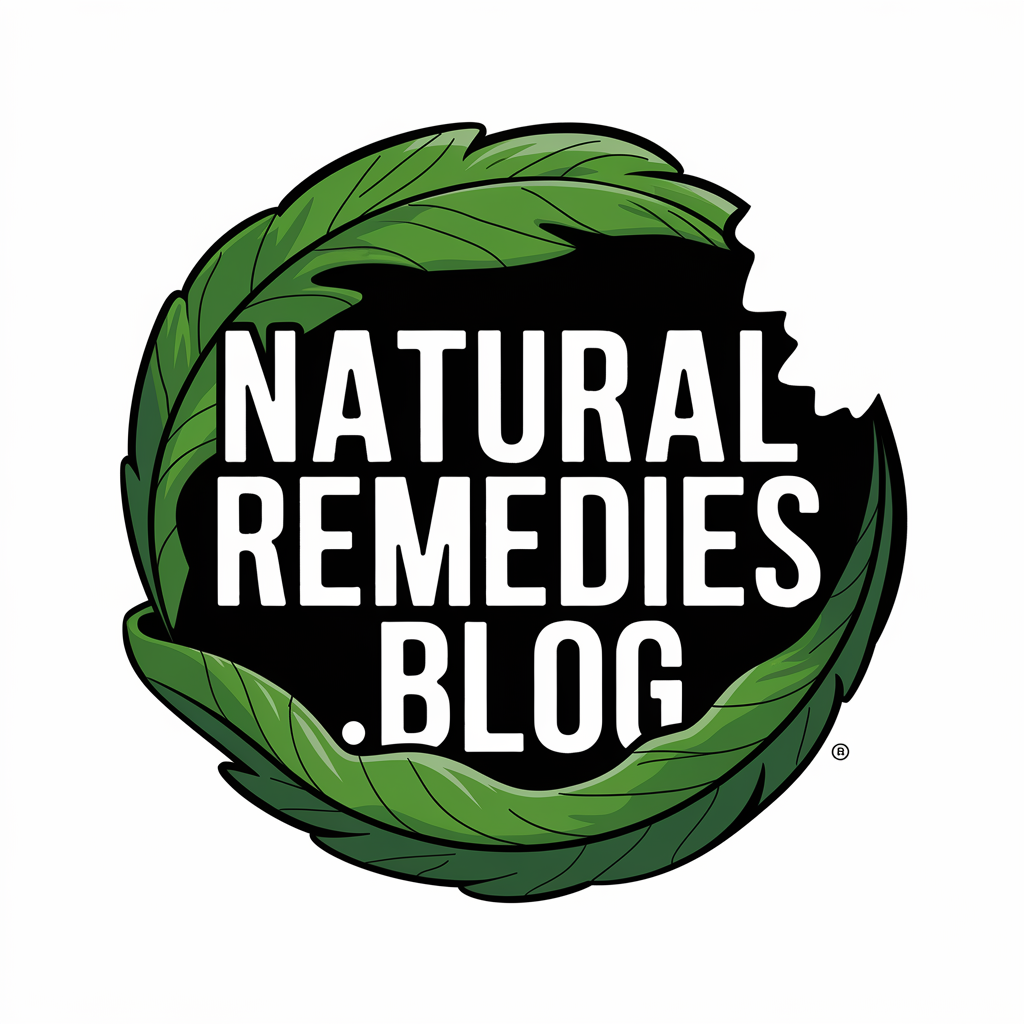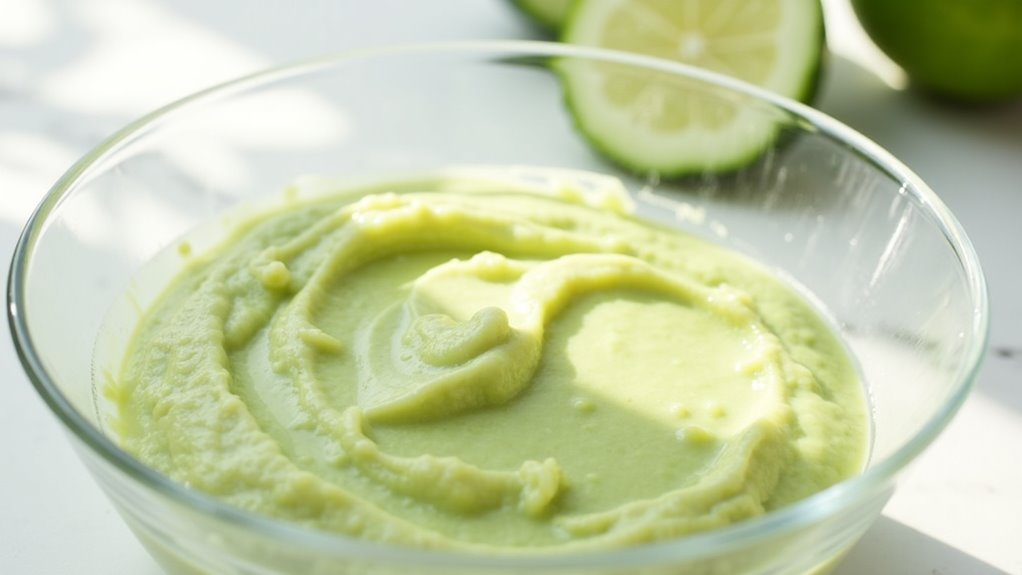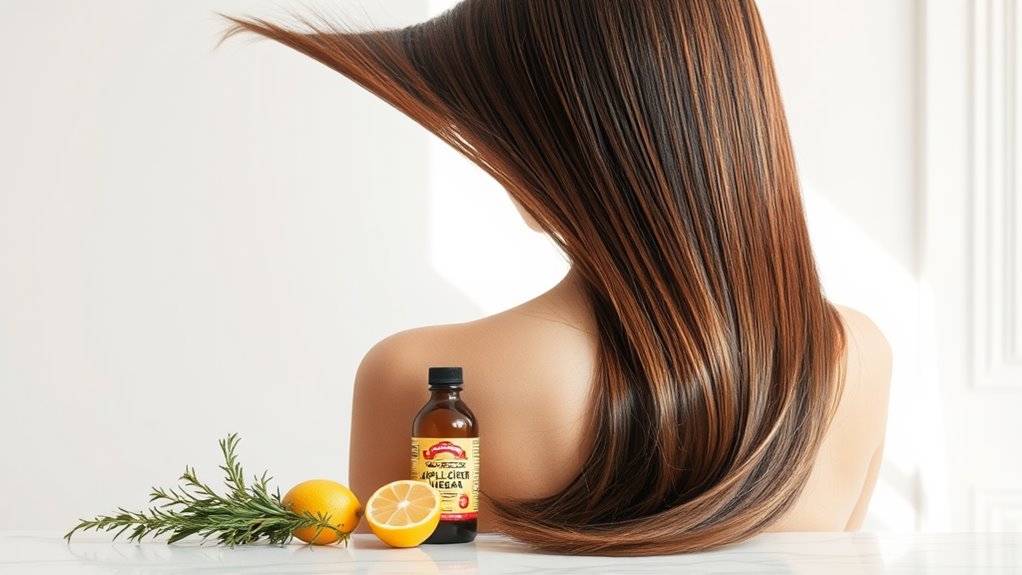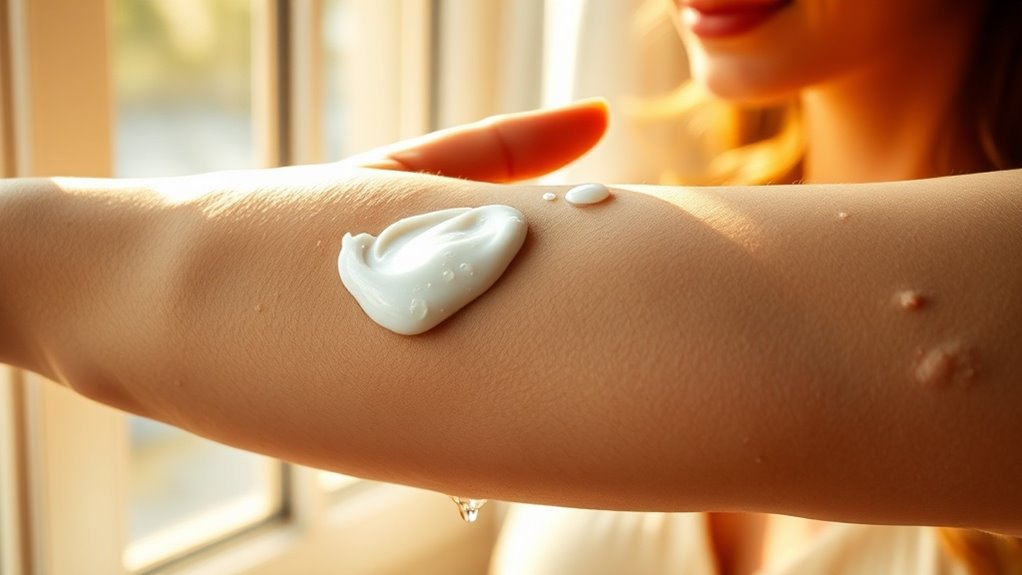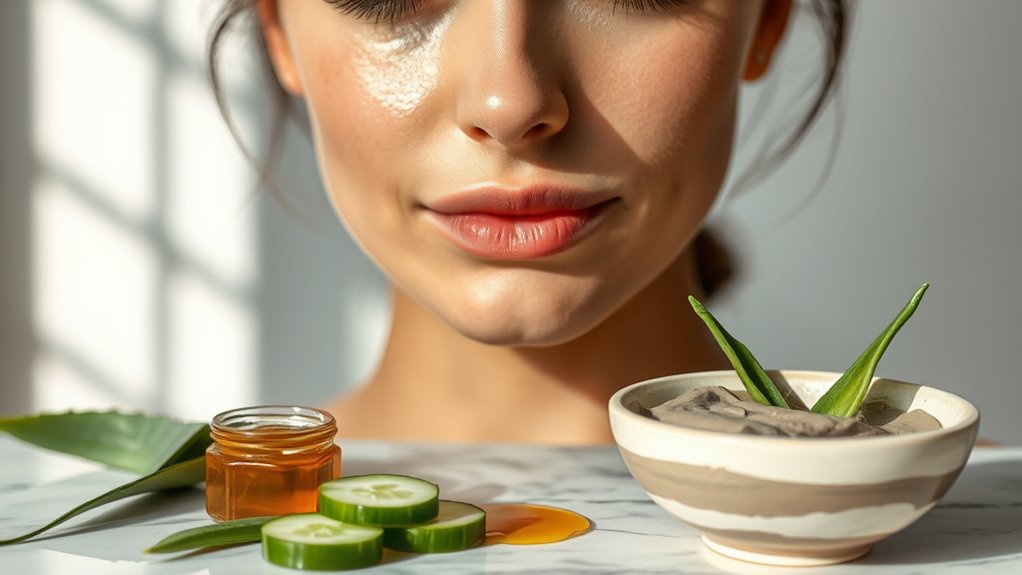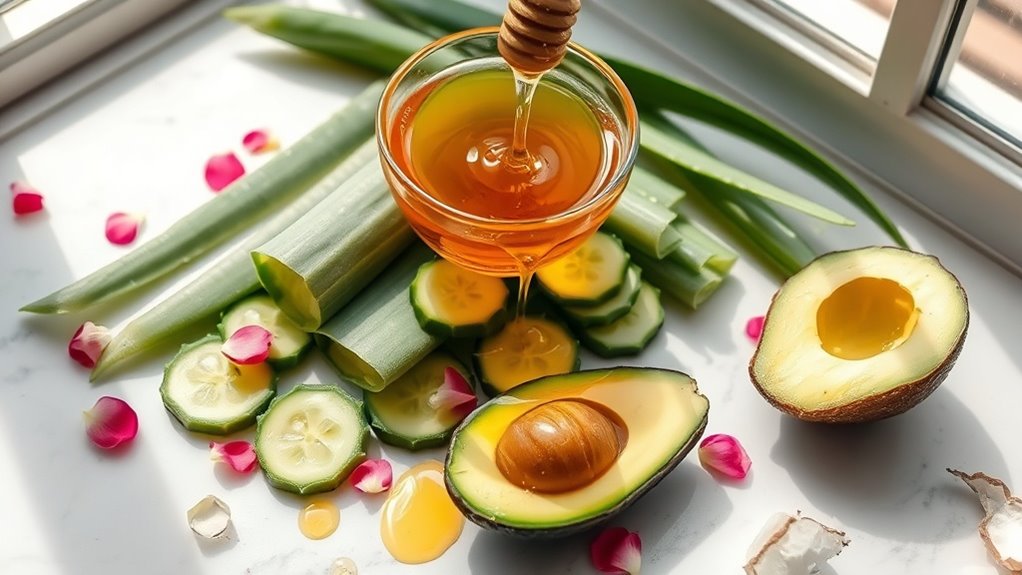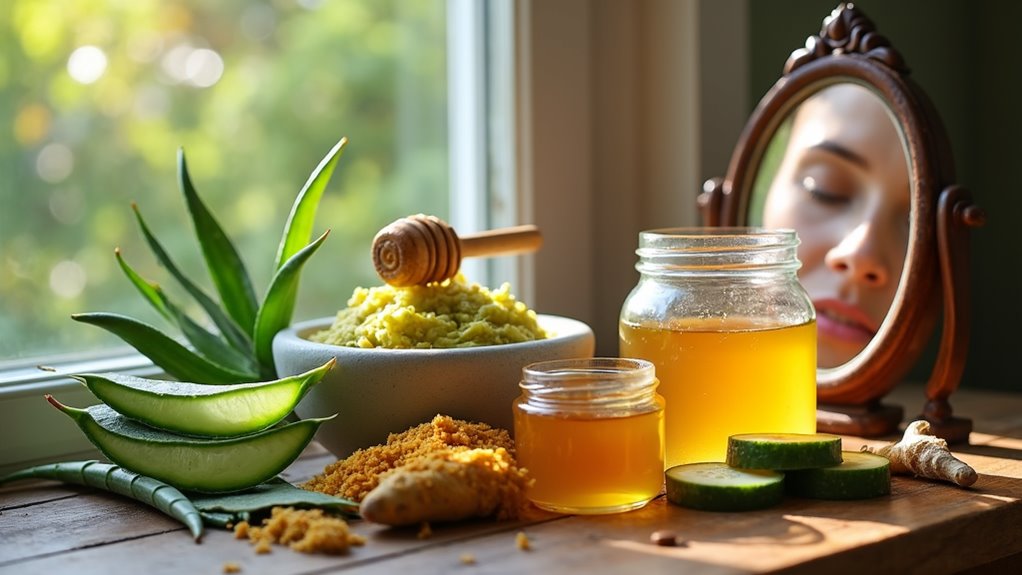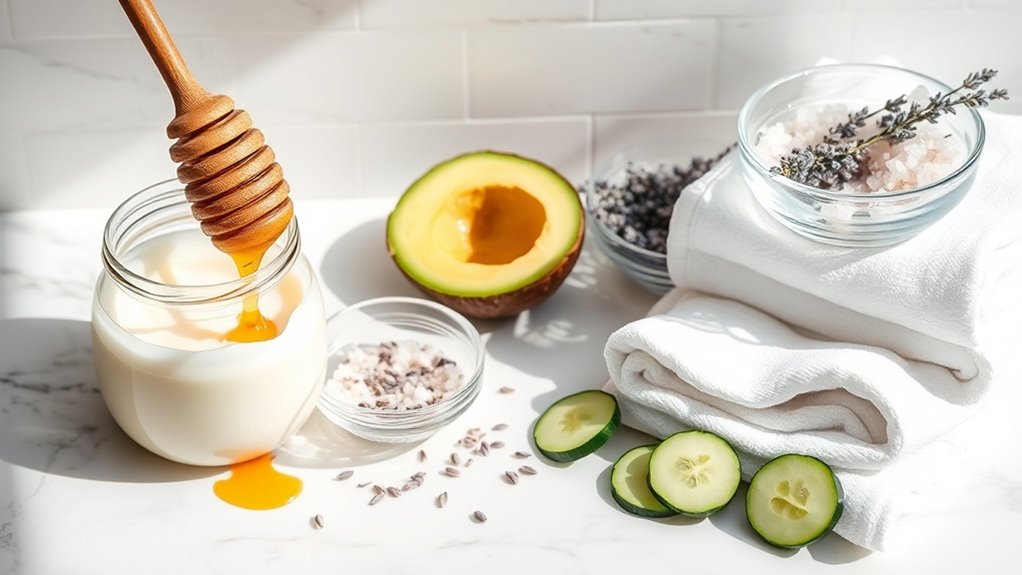Say Goodbye to Oily Skin With This Simple Natural Mix
You can effectively manage oily skin with a powerful natural mix combining tea tree oil, witch hazel, aloe vera, and niacinamide. This science-backed solution helps regulate sebum production, unclog pores, and restore skin balance through antimicrobial and anti-inflammatory properties. Apply the mixture to cleansed skin 2-3 times weekly using gentle upward motions, and store it in a dark glass bottle. Understanding the complete treatment protocol will maximize your results.
Understanding Oily Skin: Causes and Triggers
Oily skin occurs when sebaceous glands produce excess sebum, leading to a shiny complexion and enlarged pores. This overproduction can be triggered by hormonal changes, genetics, stress, or environmental factors.
In some cases, you’ll experience combination skin, where certain areas are oily while others remain dry.
Your skin type can fluctuate based on climate, medications, and your skincare routine. Harsh products that strip natural oils often worsen the condition, as your skin compensates by producing more sebum.
Understanding these triggers is crucial for effective dry and oily skin care management, allowing you to adjust your routine accordingly.
Essential Ingredients for the Natural Mix
Natural ingredients with proven effectiveness can help regulate sebum production and restore your skin’s balance.
Your essential mix should include tea tree oil, known for its antimicrobial properties that combat acne-causing bacteria, and witch hazel, a natural astringent that tightens pores.
Add kaolin clay, which absorbs excess oil without over-drying, and aloe vera for its anti-inflammatory benefits.
Include niacinamide (vitamin B3) to regulate oil production and strengthen the skin barrier.
For enhanced results, incorporate salicylic acid from willow bark extract to exfoliate and unclog pores while reducing shine.
For additional oil control, consider adding baking soda paste to your mix, as its crystalline structure gently removes dead skin cells while balancing pH levels.
Step-by-Step Recipe for Your Skin-Balancing Solution
Creating an effective skin-balancing solution requires precise measurements and controlled mixing conditions. Begin in a sterilized environment at room temperature (20-22°C) to ensure optimal ingredient interaction.
| Step | Action |
|---|---|
| 1 | Measure 30ml witch hazel |
| 2 | Add 2 drops tea tree oil |
| 3 | Mix in 15ml aloe vera gel |
| 4 | Incorporate 5ml niacinamide |
Combine ingredients in a dark glass bottle, mixing gently to avoid oxidation. The solution’s pH should measure between 5.0-5.5 for maximum effectiveness. Store in a cool, dark place and use within three months. Apply using sterile cotton pads morning and evening after cleansing.
Benefits of Each Natural Component
You’ll benefit from tea tree oil’s proven antimicrobial and anti-inflammatory properties that help regulate sebum production and fight acne-causing bacteria.
Lemon essential oil’s natural astringent and antibacterial qualities work to tighten pores while balancing your skin’s pH levels.
Natural clay’s microscopic structure allows it to draw out excess oils and impurities from deep within your pores, effectively detoxifying your skin.
Like ginger and lemon, these ingredients work together synergistically to create powerful skin-clearing effects.
Tea Tree Oil Properties
Tea tree oil contains powerful antimicrobial and anti-inflammatory compounds that specifically target acne-causing bacteria while regulating sebum production.
The primary active component, terpinen-4-ol, penetrates your skin’s surface to unclog pores and reduce inflammation. You’ll find that this natural antiseptic compound effectively neutralizes P. acnes bacteria without causing the dryness associated with conventional treatments.
Clinical studies show that 5% tea tree oil solutions can decrease lesion count and severity in acne-prone skin.
The oil’s lipophilic properties allow it to dissolve excess sebum, while its antioxidant content helps protect your skin from environmental damage and premature aging.
Lemon Essential Oil Benefits
Lemon essential oil’s potent antioxidant compounds target multiple skin concerns simultaneously. Its high concentration of citric acid effectively regulates sebum production while reducing acne-causing bacteria. The oil’s natural astringent properties help tighten enlarged pores and remove dead skin cells.
You’ll find that lemon essential oil’s vitamin C content stimulates collagen synthesis, improving skin elasticity and texture. The oil’s antibacterial compounds prevent future breakouts, while its citrus bioflavonoids brighten hyperpigmentation and even out skin tone.
When properly diluted, it’s particularly effective at balancing your skin’s pH levels and reducing excessive oiliness throughout the day.
Clay Absorption Power
Natural clay minerals possess remarkable oil-absorbing capabilities through their unique molecular structure and high surface area.
When applied to your skin, clay’s negatively charged particles attract and bind with positively charged toxins, excess sebum, and impurities.
Bentonite clay, specifically, contains montmorillonite, which expands when hydrated to create a powerful drawing effect.
Kaolin clay, milder in action, works effectively for sensitive skin while maintaining balanced oil absorption.
French green clay, rich in trace minerals and micronutrients, combines detoxification with gentle exfoliation.
These clays’ microporous nature enables them to absorb up to 40% their weight in sebum while preserving skin’s natural moisture barrier.
How to Apply the Mix for Maximum Results
Once you’ve prepared your mixture, proper application technique is crucial for optimal absorption and effectiveness.
Follow these research-backed steps to maximize clay’s oil-absorbing properties:
- Apply to freshly cleansed, slightly damp skin using upward circular motions with clean fingertips
- Create an even layer approximately 1/8 inch thick across the T-zone and affected areas
- Allow mask to dry for 10-15 minutes until slightly firm but not completely hardened
- Maintain skin hydration by misting face with thermal water during drying process
- Remove thoroughly with lukewarm water using gentle circular motions until skin is completely clean
For best results on oily skin, consider adding a few drops of fresh lemon juice to enhance the oil-controlling properties of the mixture.
Best Time and Frequency of Application
Proper timing and frequency of clay mask application play a crucial role in managing oily skin without disrupting your skin’s natural barrier function.
Apply the mask 2-3 times per week, preferably in the evening after cleansing but before your regular skincare routine. Don’t exceed this frequency, as overuse can trigger excess sebum production.
Leave the mask on for 10-15 minutes until it’s slightly tacky but not completely dry.
If you’ve got combination skin, limit application to 1-2 times weekly. During periods of hormonal changes or increased oil production, you can temporarily increase frequency to 3-4 times weekly.
For enhanced detoxifying benefits, follow your mask treatment with filtered lemon water to support your body’s natural cleansing processes.
Additional Tips for Oily Skin Management
Beyond topical treatments, effective oily skin management requires a comprehensive lifestyle approach supported by clinical research.
Studies indicate that holistic strategies can significantly reduce sebum production and improve skin texture.
-
Maintain consistent sleep patterns to regulate hormonal balance and reduce cortisol levels
-
Consume a low-glycemic diet rich in zinc, omega-3 fatty acids, and antioxidants
-
Exercise regularly to improve circulation and enhance toxin elimination through sweating
-
Stay hydrated with at least 2 liters of water daily to support cellular function
-
Manage stress through meditation or yoga to decrease androgen hormone production
Common Mistakes to Avoid
Many people sabotage their oily skin treatment by making counterproductive skincare decisions that can exacerbate sebum production.
Don’t overwash your face, as this strips natural oils and triggers compensatory oil production. Avoid alcohol-based products that dehydrate your skin, and don’t skip moisturizer, thinking it’ll make your skin oilier.
Using harsh physical scrubs can irritate sebaceous glands, while touching your face transfers bacteria and stimulates oil production. You shouldn’t apply thick, occlusive products that clog pores, and it’s crucial not to ignore sunscreen, as UV damage can worsen oily skin conditions.
Instead of harsh scrubs, consider using products with glycolic acid for gentle and effective exfoliation of oily skin.
Complementary Skincare Practices
Several complementary practices can enhance your primary skincare routine for oily skin management.
Research indicates that lifestyle modifications significantly impact sebum production and skin health when combined with topical treatments.
- Maintain optimal hydration by consuming 8-10 glasses of water daily
- Practice stress management through meditation or yoga to regulate cortisol levels
- Change pillowcases twice weekly to prevent bacterial accumulation
- Use oil-absorbing sheets instead of repeatedly washing your face
- Monitor your diet by reducing refined sugars and increasing omega-3 fatty acids
Mindful breathing techniques before meals can help regulate digestion and reduce stress-related oil production.
These evidence-based practices work synergistically with your primary skincare regimen to control excess oil production and maintain skin homeostasis.
Long-Term Results and Maintenance
Achieving lasting control over oily skin requires a sustained commitment to your daily skincare routine, including consistent cleansing, toning, and oil-free moisturizing.
You’ll need to maintain proper skincare habits by following a morning and evening regimen while adjusting products based on seasonal changes and your skin’s response.
Long-term management also depends on lifestyle modifications such as a balanced diet, regular exercise, stress reduction, and adequate sleep, which all contribute to regulated sebum production.
Consistency Is Key
While immediate fixes might provide temporary relief, lasting control over oily skin requires dedicated commitment to your skincare routine.
Research shows that consistent application of proven treatments leads to improved sebum regulation and enhanced skin barrier function.
- Cleanse your face twice daily at precisely the same times
- Apply treatments and moisturizers immediately after cleansing
- Monitor your skin’s response to products over 8-12 weeks
- Adjust product usage based on environmental factors and seasonal changes
- Document your skincare routine to identify patterns and effective treatments
Clinical studies demonstrate that patients who maintain strict regimens achieve significant reduction in sebum production within three months.
Daily Care Routine Tips
A comprehensive daily care routine forms the foundation for managing oily skin over the long term. Following a structured regimen helps regulate sebum production and maintain optimal skin health.
| Time | Action | Product Type |
|---|---|---|
| Morning | Gentle Cleanse | Non-comedogenic Cleanser |
| Morning | Tone | Alcohol-free Toner |
| Morning | Treat | Oil-free Serum |
| Morning | Moisturize | Light Gel Moisturizer |
| Morning | Protect | Non-greasy SPF |
Track your skin’s response to this routine and adjust product concentrations as needed. Clinical studies show that consistent application of targeted skincare products containing salicylic acid, niacinamide, or retinoids can reduce excess oil production by up to 40% within 8-12 weeks.
Lifestyle Changes That Help
Since lifestyle factors significantly influence sebum production, making strategic changes to your daily habits can yield lasting improvements in skin health.
Clinical studies have demonstrated the impact of lifestyle modifications on sebaceous gland activity and overall skin appearance.
-
Maintain consistent sleep patterns of 7-9 hours to regulate hormonal balance
-
Follow a low-glycemic diet rich in omega-3 fatty acids and antioxidants
-
Exercise regularly to improve circulation and reduce stress hormones
-
Stay hydrated with 2-3 liters of water daily
-
Minimize exposure to environmental pollutants and high-humidity conditions
These evidence-based interventions target the root causes of excess oil production rather than just treating surface symptoms.
